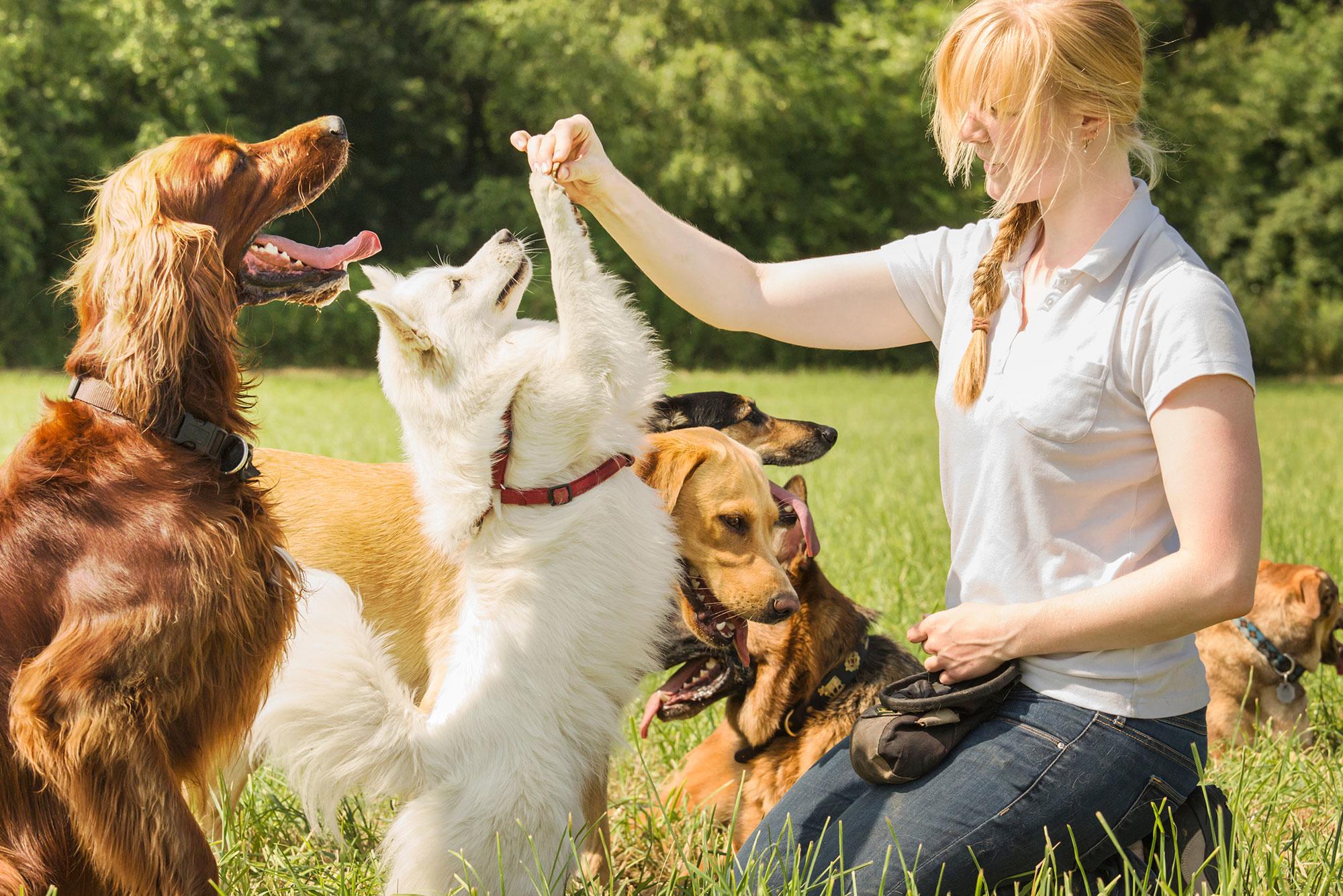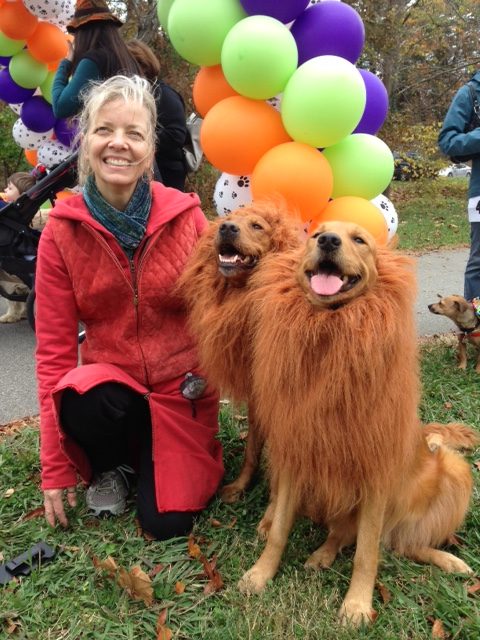The Ultimate Overview to Positive Support in Dog Training
The Ultimate Overview to Positive Support in Dog Training
Blog Article
Essential Tips for Successful Dog Training: A Guide for Family Pet Owners
Effective dog training is a multifaceted process that requires a strategic technique customized to both the pet dog's temperament and the owner's purposes. Trick components such as developing regular commands, employing positive reinforcement, and facilitating very early socializing play vital duties in promoting a well-adjusted canine companion. Numerous family pet owners experience difficulties that can impede progression, leading to stress and uncertainty. Recognizing just how to navigate these challenges can substantially enhance the training experience, eventually transforming the partnership in between owner and dog. What are the important techniques that can be used to ensure success in this undertaking?
Understanding Dog Behavior
Recognizing canine behavior is necessary for effective training and fostering a harmonious partnership between canines and their proprietors. dog training. Dogs connect largely via body language, articulations, and actions, making it critical for owners to interpret these signals properly.

Socializing plays a substantial duty in pet dog behavior; direct exposure to different environments, people, and other pets can considerably affect a canine's character. In addition, variables such as breed features and specific temperament must assist training approaches, as some types may have particular behavior attributes that demand customized strategies. By understanding these components, proprietors can develop a helpful setting that encourages favorable actions, bring about effective training outcomes and a much deeper bond with their pet dogs.
Establishing Constant Commands
Effective communication with your canine begins with establishing consistent commands. This fundamental component of training is essential for promoting understanding between you and your pet dog. Uniformity in the commands you make use of guarantees that your canine can dependably link particular words or phrases with the desired actions.
When choosing commands, pick clear, distinctive words that are very easy to state and distinguish from each other. Prevent using similar-sounding commands that may perplex your canine. Making use of "sit" and "remain" is suitable, however "sit" and "struck" might lead to misunderstandings.
Additionally, keep the very same tone and quantity for every command. Pet dogs are delicate to vocal cues, so differing your tone can produce confusion.
It is just as vital to make sure that all household members get on the very same page regarding the commands made use of. A united front in command usage will protect against mixed signals and enhance the learning procedure.
Favorable Support Strategies
The power of favorable reinforcement in dog training exists in its capability to encourage preferred habits with rewards and appreciation. This strategy is grounded in the concept that actions complied with by desirable outcomes are more most likely to be repeated. By incorporating favorable reinforcement into your training regimen, you can properly form your pet's actions in a positive way.
To carry out positive support, it's necessary to recognize what motivates your dog, whether it be treats, toys, or spoken praise. When your pet dog does a desired activity, such as resting on command, right away compensate them with a reward or love. This organization in between the command and the favorable outcome strengthens their understanding.
It's critical to timing the benefits correctly; providing the reinforcement within secs of the desired habits helps your pet make the connection (dog training). In addition, uniformity is vital-- ensure that all household members utilize the very same commands and reward systems to stay clear of complication

Gradually, you can reduce the regularity of treats as your canine learns the habits, transitioning to applaud or intermittent benefits. This method not just fosters a strong bond between you and your pet however also promotes a favorable learning environment, making educating a delightful experience for both.
Socialization and Communication
Continually revealing your dog to a variety of environments, people, and other pets is important for their social growth. Socializing needs to start early, ideally during browse around these guys the essential home window of 3 to 14 weeks, when puppies are most responsive to brand-new experiences. Older pets can also benefit from recurring socializing efforts.
Introduce your dog to various settings, such as parks, pet-friendly shops, and metropolitan areas. This exposure aids them adapt to different stimulations, minimizing stress and anxiety and worry reactions. Urge positive interactions with various other dogs and individuals, ensuring that these experiences are risk-free and regulated to promote confidence.
Utilize structured playdates with genteel dogs, as this can improve your pet dog's social abilities and instruct them appropriate actions. Obedience classes and training sessions likewise offer outstanding possibilities for socializing, allowing your pet to connect with others in a monitored atmosphere.
Monitor your dog's body language during communications, as this will aid you evaluate their comfort level. Progressively enhance exposure to even more tough circumstances while ensuring that each experience is favorable. A well-socialized dog is most likely to exhibit balanced actions, making them a pleasure to have in any kind of setting.
Attending To Typical Training Difficulties
Every pet proprietor will certainly run into training difficulties eventually, no matter of their pet's age or socialization degree. Determining usual concerns such as stubbornness, disturbances, and terror can assist in developing reliable approaches for improvement.

Slowly introduce interruptions as the dog becomes more efficient in commands. Short, constant training sessions are additionally reliable in maintaining focus.
Fearfulness can hinder a canine's learning process. Gradual desensitization to the resource of worry, coupled with positive support, can assist reduce anxiousness. Perseverance is crucial; never ever compel a pet dog into a scenario that causes distress, as this may exacerbate the problem.
Ultimately, understanding and dealing with these common difficulties with a structured strategy will certainly cultivate a more efficient training experience, reinforcing the bond between pet dog and owner while advertising efficient understanding.
Verdict
In recap, successful dog training relies upon a detailed understanding of canine actions, the establishment of regular commands, and the application of favorable reinforcement methods. Socializing plays an essential function in establishing well-adjusted animals, while resolving common training challenges needs patience and adaptability. By executing these important techniques, family pet proprietors can cultivate a solid bond with their dogs and advertise desirable actions, ultimately bring about a harmonious connection in between people and their canine friends.
Understanding pet actions is vital for reliable training and fostering a harmonious connection in between pooches and their owners.Socializing plays a substantial role in canine habits; exposure to article source various atmospheres, people, and other pets can considerably affect a dog's temperament.The power of favorable reinforcement basics in pet dog training exists in its capacity to motivate desired habits via rewards and praise. By integrating positive reinforcement into your training regimen, you can properly form your pet dog's behavior in a constructive fashion.
In recap, successful canine training relies on a thorough understanding of canine behavior, the establishment of regular commands, and the application of positive support methods.
Report this page